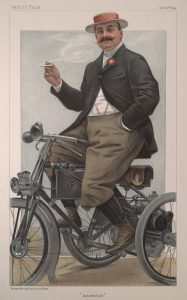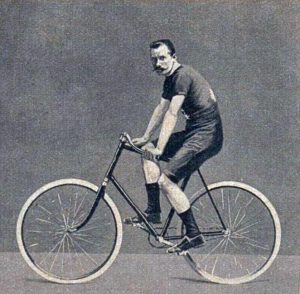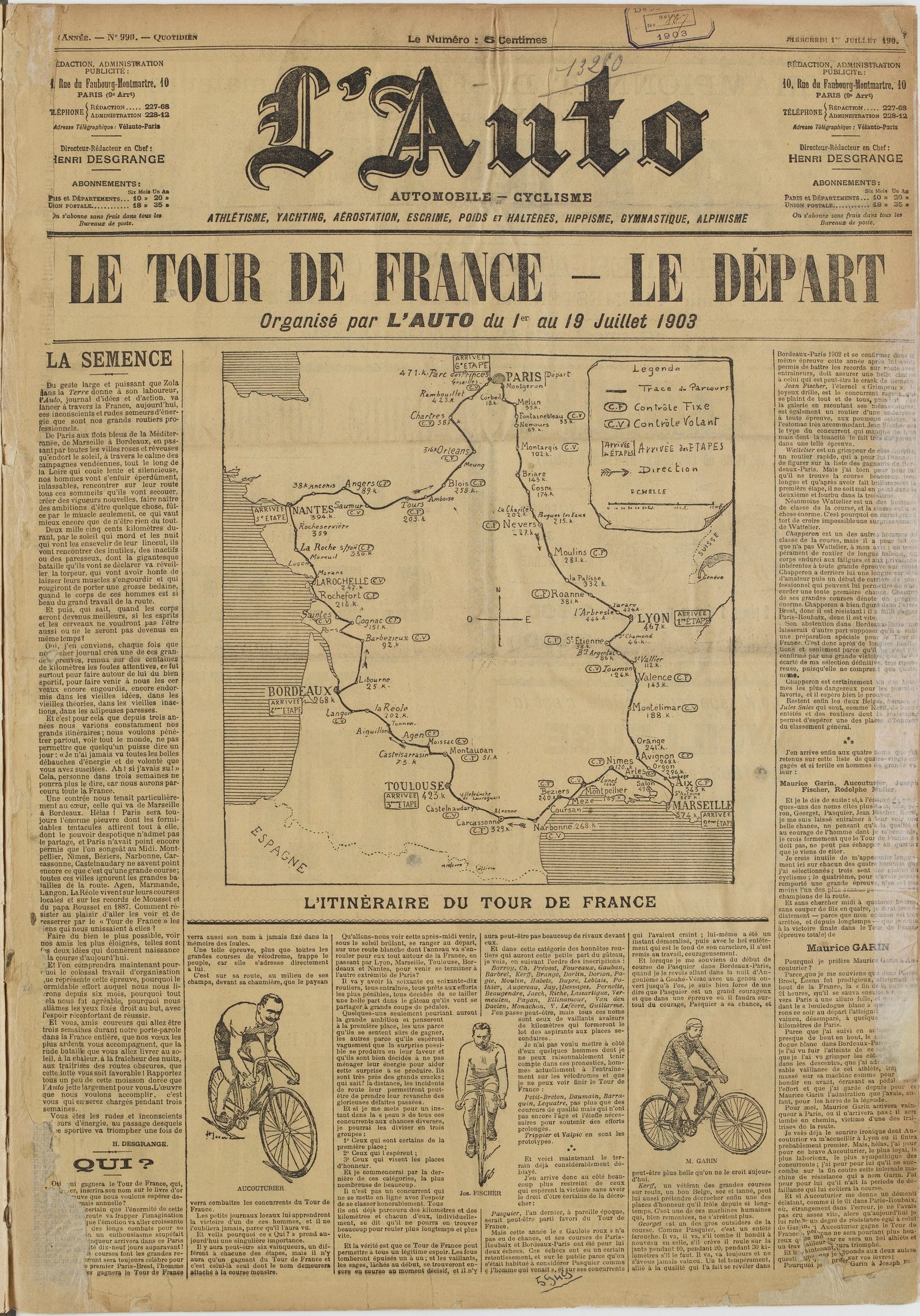The Greatest Cycling Event Ever Organised.
The Tour de France is the world’s premier cycling event with the largest number of viewers of any sporting competition. 3.5 billion viewers nearly half the world’s population will watch some of the 2023 Tour de France. Started as a result of a rivalry between two sporting newspapers Le Vélo and L’Auto and the division in France over the Dreyfus Affair.
At the end of the 19th century, the daily newspaper Le Vélo, which had a circulation of 300,000 copies, had a monopoly on the press specialising in sport. Its editor-in-chief, Pierre Giffard, associates his newspaper with his personal commitments and takes a position in the columns of his daily newspaper in favour of Captain Dreyfus, which displeases the cycle and automobile manufacturers, who are primarily anti-Dreyfusards and who finance his newspaper through advertising.
 In June 1899, Jules-Albert de Dion, an anti-Dreyfusard far-right politician and industrial co-founder of the De Dion-Bouton automobile company and a pioneer in the industry, was sentenced to fifteen days in prison for his involvement in a fight provoked by anti-Dreyfusards, the day after the quashing of Captain Dreyfus’s conviction, during a public meeting in the presence of the President of the Republic, Émile Loubet.
In June 1899, Jules-Albert de Dion, an anti-Dreyfusard far-right politician and industrial co-founder of the De Dion-Bouton automobile company and a pioneer in the industry, was sentenced to fifteen days in prison for his involvement in a fight provoked by anti-Dreyfusards, the day after the quashing of Captain Dreyfus’s conviction, during a public meeting in the presence of the President of the Republic, Émile Loubet.
Pierre Giffard publicly criticised the political alignment of the Comte de Dion. He demanded his resignation from the presidency of the Automobile Club de France. A conflict between the two men ensued, leading to Pierre Giffard no longer allowing reference to De Dion-Bouton cars in the pages of his paper. The Comte de Dion then distanced himself from Pierre Giffard and decided to create his own newspaper. Supported by other cycle and automobile manufacturers, including Adolphe Clément, Édouard Michelin and Baron Étienne van Zuylen van Nyevelt, President of the Automobile Club de France, who are also motivated by the high advertising rates charged by Pierre Giffard.

They appointed Henri Desgrange as the Director of this new paper. Desgrange was a former professional cyclist and the holder of the first International cycling Union (Without Coach) Hour Record, a feat he managed in 1893, covering a distance of 35.325 km in 60 minutes. He was also a specialist in the sports press as he served as the Director of the defunct daily, Paris-Vélo. , and the cyclist and automobile section of the newspaper L’Outsider.
Launched on October 16, 1900, on the occasion of the Universal Exhibition and the Olympic Games in Paris, the daily newspaper L’Auto-Vélo was published on yellow paper in contrast to Le Vélo, which was printed on green paper. Henri Desgrange used his editorship to affirm his support of his benefactors in the automobile and cycling industries whilst remaining politically neutral.
In 1902, Giffard brought a lawsuit against L’Auto-Vélo, claiming to be wronged by the presence of Vélo in the newspaper’s title. No longer able to include the word, the newspaper was renamed L’Auto from January 16, 1903.
Already struggling to compete with Le Vélo’s circulation Henri Desgrange feared that passionate cycling readers would turn away from his daily  paper because of its new name. He asked his colleagues to develop a race that would exceed in fame those organised by Le Vélo while promoting sales of L’Auto.
paper because of its new name. He asked his colleagues to develop a race that would exceed in fame those organised by Le Vélo while promoting sales of L’Auto.
During an editorial conference on November 20, 1902, followed by a lunch in the Parisian brasserie Le Zimmer, the journalist Géo Lefèvre proposed a cycle race around France. Initially sceptical, Henri Desgrange finally approved the project and convinced Victor Goddet, the paper’s treasurer who reputedly handed over the keys to the company safe, saying take what you need. On January 19, 1903, L’Auto announced the creation of the Tour de France, “the greatest cycling event ever organised”, on its front page.
Initially, scheduled to run between the 31st May and the 5th July, with six stages emulating the six-day track meets that were popular at the time.
Only 15 competitors signed up, so Desgrange rescheduled the event to run between 1st and 19th July. The entry fee was halved to 10 francs(approx €36 today), and rest days were planned.
Riders had fixed rear-wheel bikes fitted with flip-flop hubs. This was a sprocket on each side, enabling the wheel to be removed and flipped around to provide a different gear ratio.
Gears had been patented for 30 years before the first Tour de France, but Desgrange disapproved of their use. In fact, it was not until 1937 he allowed all riders to use Dérailleurs. Until then, they could only be used by participants in the isolé (independent) category.
Braking on fixed-wheel bikes meant applying back pressure to the pedals. Coasting downhill required removing the rider’s feet from the pedals completely.
Competitors had to provide and carry their own sustenance, spares and tools. Still, purportedly Desgrange offered the first 50 riders an allowance of five francs (€18 today) per stage for food.
The total course length in 1903 was 2,428 km – making it the second-shortest course in Tour history (the shortest was in 1904, at 2,420 km)
but the individual stages were gruelling
Stage 1, from Paris to Lyon, was 467 km; Stage 2, from Lyon to Marseille, 374 km; Stage 3, from Marseille to Toulouse, 423 km; Stage 4, from Toulouse to Bordeaux, 268 km; Stage 5 from Bordeaux to Nantes, 425 km; and the final, Stage 6, from Nantes back to Paris, was 471 km.
The longest stage in the 2023 Tour is 209 km.
The prize money of 20,000 francs (€73000,) was distributed among the stages and general classification. Riders not completing an étape could enter the next and were still eligible for the classement générale in contrast to today’s rules.



